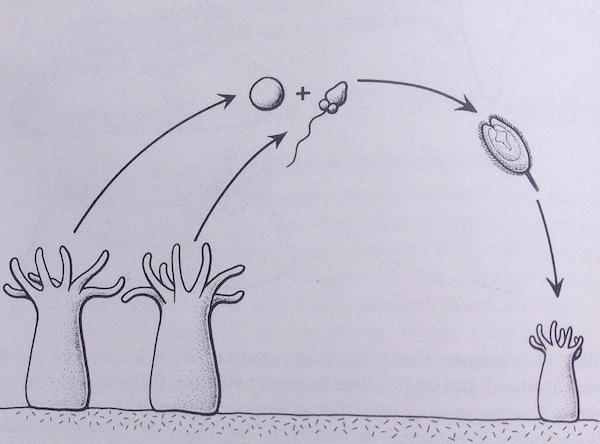Life History
Life History
As a member of the class Anthozoa, the sea anemone does not have a medusa stage in its life cycle like other Cnidarians, and so there are three stages for a sexually reproducing sea anemone: adult polyp > planula larva > juvenile polyp. The larvae are planktonic with a monociliated epidermis and yolky gastrodermis that provides sufficient nutrients for the larva to find a suitable place for settlement and metamorphose into a juvenile polyp. Whilst in the water column, the larva leads with its aboral end, which then attaches to the substrate at time of settlement and becomes the pedal disc. This type of life cycle is considered primitive and ancestral within the Cnidarian phylum.
|

|
|
The presumed primitive life cycle, Adult Polyp > Planula Larva > Juvenile Polyp. This image depicts the planula swimming with the aboral end leading, which leads to it becoming the pedal disc (Ruppert et al. 2004)
|
|